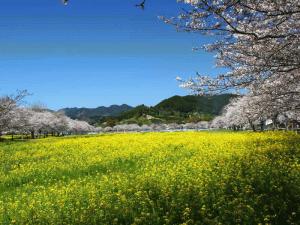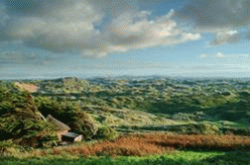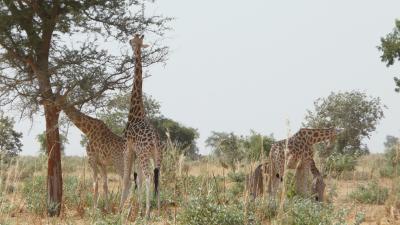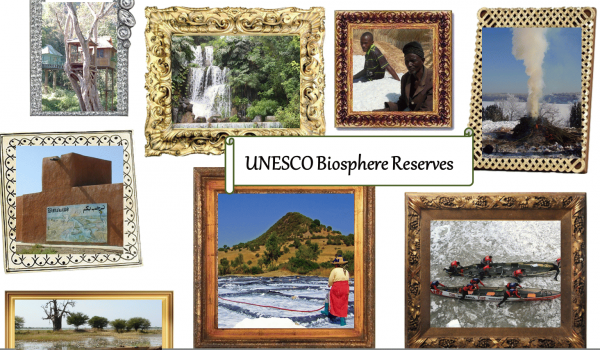Biosphere Reserves – Where the local meets the global…
- Eric Falt
- Assistant Director-General for External Relations and Public Information at UNESCO
How can we protect biodiversity and cultural diversity while pursuing sustainable development?
This question stands at the heart of the discussion underway across the world on crafting a new agenda for global sustainable development. UNESCO has been seeking to answer this question since the 1960s. What does this mean in practice?
In practice, this means the Aya Biopshere Reserve, located in the eastern part of Japan’s southern Kyushu Island. This Biosphere Reserve harbours one of the country’s largest remaining lucidophyllous forests, featuring rich biodiversity and many indigenous species. Forest therapy and traditional recycling-based agriculture in Aya Town are an ecotourism draw to the reserve. (Photo: Aya Biopshere Reserve)
Another example is the Agua y Paz Biosphere Reserve in Costa Rica.
On November 6, 2013, Ms Laura Chinchilla, President of Costa Rica came to UNESCO in Paris and announced her determination for Costa Rica to be a carbon-neutral country by 2021. This pledge is being taken forward in practice in the Agua y Paz Biosphere Reserve. This reserve features both mountain ranges and plains, including volcanoes as well as lakes, flooded forests and swamps – large parts of which have been declared carbon-neutral pilot areas. Each community in the reserve is now assessing its carbon footprint, and the reserve is working closely with private sector companies pioneering carbon-neutral ways of working.
This is an example of innovative partnership between local communities, civil society and the private sector, to protect biodiversity and promote sustainable human development. For UNESCO, this is where the ‘local’ meets the ‘global’ and makes its greatest impact.
Sustainable development is the new catchword in global affairs – UNESCO has long been engaged in clarifying what it really means on the ground.
This work started in 1968, when UNESCO took the lead in organising the Biosphere Conference. This was the world’s first intergovernmental meeting exploring the scientific basis for the use and conservation of our biosphere’s resources.
This led to the creation of the UNESCO Man and the Biosphere Programme in 1971, which opened the way for building the World Network of Biosphere Reserves. These reserves represent the main ecosystems of the planet in which genetic resources should be protected, and where research, monitoring and training work can be carried out. Today, there are 621 Biosphere Reserves in 117 countries, including 12 transboundary sites.
In all this, UNESCO is guided by clear principles. Managing the biosphere means managing the relationship between human development and the environment. It means understanding and acting on the symbiosis between natural ecosystems and social and economic processes. It means grasping the inter-dependence between biological and cultural diversity.
The World Network of Biosphere Reserves embodies our commitment to identifying these linkages and to reconciling the conservation of biological and cultural diversity with social and economic processes.
Biosphere Reserves are strategic locations for studying and implementing climate change policies in practice – across the full range of ecosystems, from mountains, marine, coastal and island areas, tropical forests, drylands and urban areas to savannahs and agro-ecosystems. They are the only United Nations designated areas dedicated to responding to climate change on the lines of intergovernmentally-agreed principles.
These are places for innovation, implementing on the ground the concepts of sustainable tourism, renewable energy and organic agriculture. They are also places guided by the spirit of partnership – partnership between the public and private sectors, with civil society organisations, always working with local populations.
The reserves remain under national jurisdiction, but the World Network allows them to share experience and ideas regionally and internationally.
Take the example of Malindi Watamu in Kenya and North Devon in the United Kingdom.
(Photo: North Devon)
7,500 kilometres separate these two Biosphere Reserves, along with different climates and ecosystems. Everything would seem to set them apart – except for the problems they share. On both reserves, sea-level rise and erosion are eating into beautiful coastlines, threatening wildlife habitats and the local economy. Since 2008, the two communities have been cooperating, to learn from each other about how best to adapt to rising pressures.
The same spirit guides transboundary Biosphere Reserves in Africa. In the Delta du Fleuve Senegal, of Senegal and Mauritania, and W region of Niger, Burkina Faso and Benin, the creation of transboundary reserves has strengthened the cohesion of communities living across the borders and improved the integrity of the local ecosystem.
(Photo: W region)
Launched 43 years ago, UNESCO Biosphere Reserves have come of age. At a time when the consequences of climate change are deepening for societies and ecosystems, they provide essential living laboratories of sustainability, for today and tomorrow.
In 1997, UNESCO Member States agreed on a Declaration on the Responsibilities of the Present Generations Towards Future Generations, which stated: “The present generations have the responsibility of ensuring that the needs and interests of present and future generations are fully safeguarded.”
The bridge between present and future generations lies with young women and men. They stand at the heart of UNESCO’s work, notably as leader of the United Nations Decade of Education for Sustainable Development (2005-2014).
This includes awards to support young scientists, along with a wide range of teaching guides and educational materials that draw on the unique lessons offered by Biosphere Reserves.
For instance, in the Red River Delta Biosphere Reserve in Vietnam, inter-generational educational programmes have been developed, where students, parents and community members work together on activities for climate change adaptation and to counter the loss of biodiversity.
Linking formal and informal education is essential to our work. This is also what we are doing in the Clayoquot Biosphere Reserve in Canada, working for stronger youth services and planning.
(Photo: Clayoquot Biosphere Reserve)
All of this work is especially important today, less than one year away from 2015, at a time when we are shaping a new global sustainable development agenda to follow.
Clearly, technological and economic solutions are not enough for sustainable development. We need to craft new ways of thinking and acting, and these must start with education, to shape new values, skills and knowledge.
They must start also in real ways on the ground, in places where the ‘local’ meets the ‘global’— in places like the UNESCO Biosphere Reserves.
Strengthening harmonious partnerships between people and nature, in ways that are meaningful and sustainable – this is part of UNESCO’s answer to the questions facing the world today.
Profile of Eric Falt
Eric Falt is the Assistant Director-General for External Relations and Public Information at the United Nations Educational, Scientific and Cultural Organization (UNESCO), based in Paris.
He oversees the work of the Organization in the political field, with Member States in particular, and coordinates activities geared towards civil society. He also guides the Organization’s communications and public information efforts.
He served previously as Director of the Outreach Division of the United Nations Department of Public Information in New York, which aimed to engage and educate people and their communities around the world in support of the United Nations.
From 2002 to 2007, Mr. Falt was Director of Communications for the United Nations Environment Programme (UNEP), based at its headquarters in Nairobi, Kenya.
Throughout the 1990's, he also served as Director of the UN Information Centre in Islamabad, Pakistan and in peacekeeping and humanitarian operations in Iraq, Haiti and Cambodia.
Before joining the United Nations, Eric Falt served in the French Ministry of Foreign Affairs in Chicago and in New York.
He has taken a very keen interest in issues related to gender equality and to the aspirations of the African peoples.















